A-D – E-I – J-M – N-Q – R-U – V-Z
Welcome to my culinary glossary, your ultimate guide to unraveling the mysteries of cooking terminology. Enhance your culinary prowess and explore the world of kitchen jargon with ease.
Here are some cooking terms that you will find in every cookbook but may not be familiar with, including new terms I’m just learning about.
New Cooking Terms & Definitions
Here are some common restaurant terms you may be interested in learning:
Fire Up is a command a chef or kitchen staff gives to start cooking or preparing a specific dish. When a ticket comes into the kitchen with an order for a particular item, the chef may call out “Fire up the steak” or “Fire up the pasta,” indicating that the cooking process for that dish should begin. This phrase helps coordinate the timing and execution of orders in the kitchen to ensure that all dishes are prepared and served promptly and efficiently.
Covers refer to the number of meals served to customers during a specific period, typically within a day or a meal service. It is a way for restaurant staff and management to track the volume of business and understand how busy or slow a particular shift or day has been. The term “covers” counts the total number of guests or parties served, not the individual dishes or courses ordered. For example, if a restaurant serves 50 guests during lunch service, it would be said to have had 50 covers for lunch. Monitoring covers helps restaurants plan staffing levels, manage inventory, and analyze overall performance.
In the Weeds is a common phrase in the restaurant industry to describe a situation in which a server or kitchen staff member is overwhelmed and struggling to keep up with their tasks. When someone is “in the weeds,” they may be dealing with a high volume of orders, facing delays, or experiencing other challenges that make it difficult for them to handle their responsibilities efficiently. This term is often used to seek assistance or to let others know that help is needed to manage the workload effectively.
Stretch It refers to the practice of making a limited amount of ingredients or supplies last longer or go further. This is often done to manage costs and reduce waste. For example, if a restaurant is running low on a particular ingredient, the kitchen staff may be instructed to “stretch it” by using smaller portions or finding creative ways to incorporate it into multiple dishes. Stretching resources can be essential for maintaining efficiency and profitability in a restaurant setting.
86 It means to remove an item from the menu or to no longer offer it to customers. When an item is “86’d,” it indicates that the restaurant has run out of that particular dish or ingredient and is no longer available for ordering. This term is often used to communicate to servers and kitchen staff that they should inform customers that the item is unavailable. The term’s origin is unclear, but it has been used in the restaurant industry for many years.
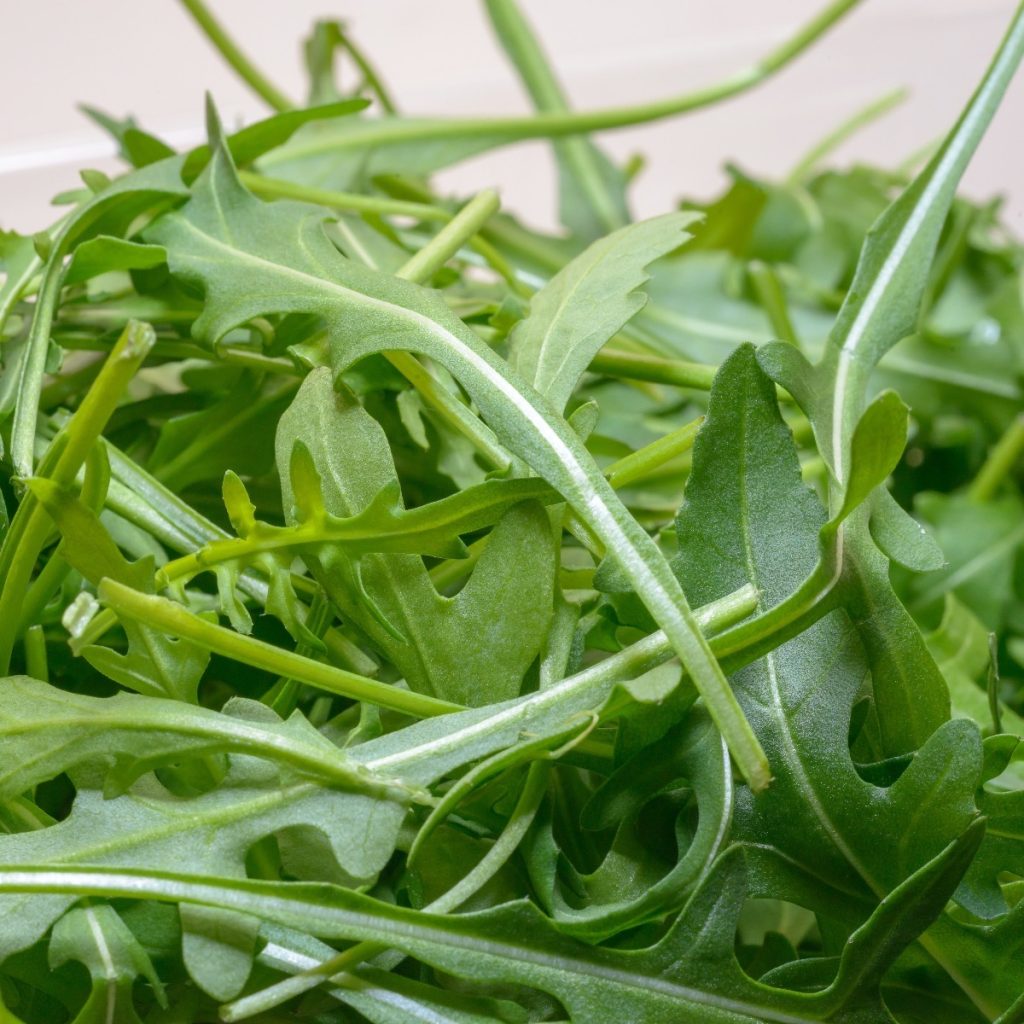
A – D
Aglione sauce is a traditional Tuscan sauce known for its simplicity and bold flavors. Made with garlic, tomatoes, chili peppers, and olive oil, it delivers a vibrant combination of spicy, garlicky, and slightly sweet notes. It is often paired with pici pasta for a satisfying and authentic culinary experience.
All Purpose Flour A blend of high and low protein flours. The manufacturers blend the flour so that there is enough gluten in it to make a reasonable (often excellent) loaf of bread but not so much that you will end up with a chewy birthday cake. This is why they call it “all purpose:” It is good to use in various baked goods.
I direct you to read my friend Lola’s explanation for a great explanation of how al dente pasta should feel and taste. Lola is a wonderful home cook from Italy and knows what she is discussing. Her description of al dente is at the end of my post for Pasta e Fagioli.
Aperol Spritz is a popular Italian aperitif cocktail. It combines Aperol, a bitter orange liqueur, with prosecco, a sparkling wine, and a splash of soda water. The result is a refreshing, bittersweet drink with vibrant orange hues, perfect for enjoying during sunny afternoons or social gatherings.
Arborio rice is a short-grain, stubby type originally from Italy and named after a town in the Po Valley. With a higher starch content than most rice, properly cooked Arborio rice is creamy but firm and chewy.
Arugula, also known as rocket or rucola, is a leafy green vegetable with a distinctive peppery and slightly nutty flavor. It belongs to the brassica family and is rich in vitamins A, C, and K. Arugula is commonly used in salads, sandwiches and as a flavorful garnish.
Avocados are versatile fruits known for their creamy texture and mild, nutty flavor. They are packed with healthy fats, fiber, and various vitamins and minerals. Avocados are commonly used in salads, spreads, and smoothies and as a key ingredient in guacamole, adding a delicious and nutritious element to dishes.
Bearnaise Sauce Béarnaise sauce is a classic French sauce made with reduced white wine, vinegar, shallots, and tarragon, combined with egg yolks and clarified butter. It is known for its rich, creamy texture and tangy, herbaceous flavor, often served with grilled meats or as a topping for eggs Benedict.
Bone broth is a nourishing and flavorful liquid made by simmering animal bones, often with aromatics and vegetables, for an extended period of time. It is known for its rich collagen content, providing a range of potential health benefits and serving as a versatile base for soups, stews, and other dishes.
Boquerones (bo-keh-ROAN-es) – also known as white anchovies in the United States and gavros in Greece, boquerones are freshly cured anchovies. They are basically cooked like ceviche in either lemon juice or vinegar depending on where you live and salted to draw some of the moisture out.
Braise (BRAYZ) A cooking method where meat or vegetables are first browned in butter and/or oil, then cooked in a covered pot in a small about of cooking liquid at low heat for a long period of time. This slow cooking process both tenderizes the food by breaking its fibers and creating a full-flavored dish. Check out my article on Braising and then my recipe for osso buco for a delicious example of this cooking method.
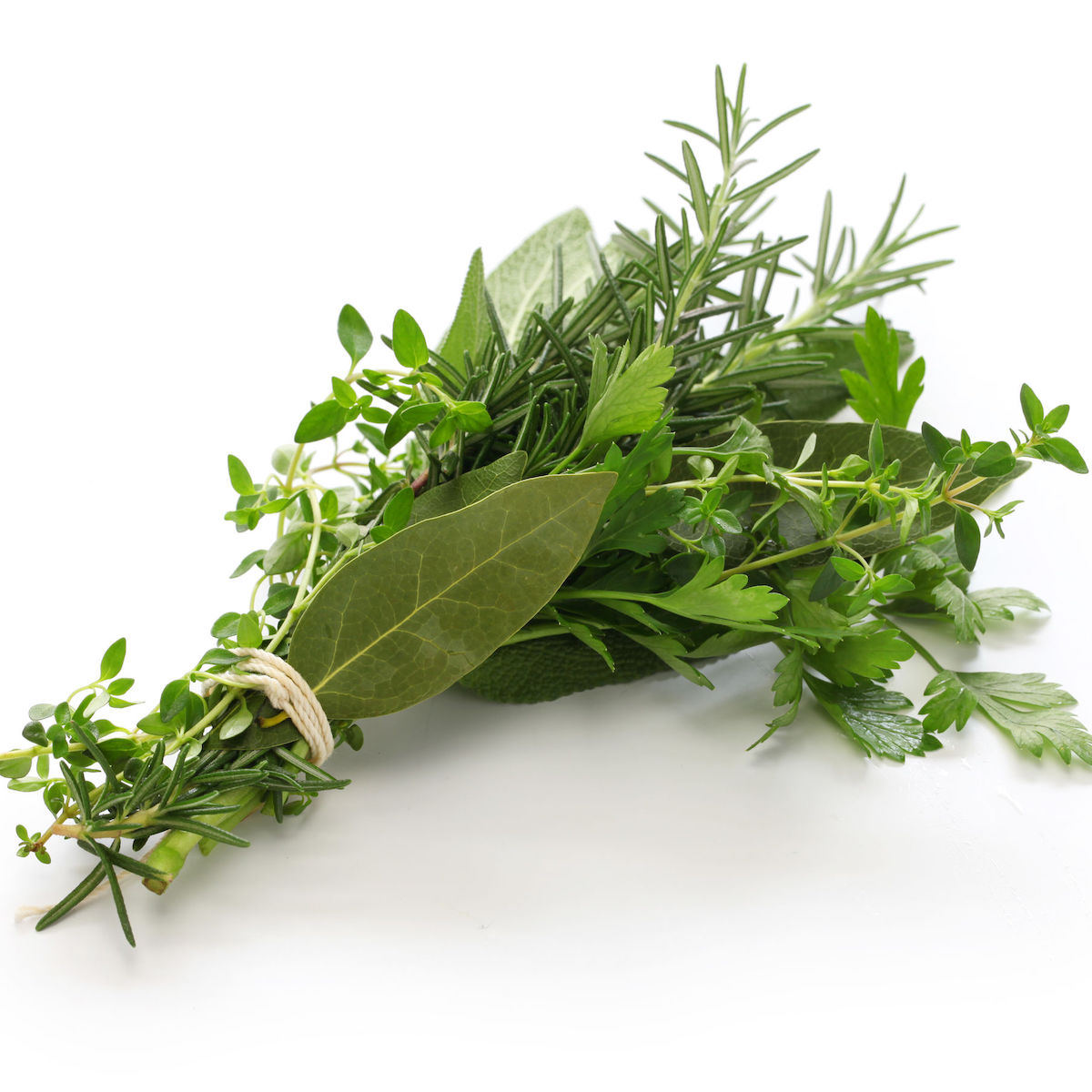
Bouquet garni is a little bundle of herbs tied together or placed together in a piece of cheesecloth, used to enhance the flavor of a soup or stew. The classic combination of herbs is parsley, thyme, and bay leaf, but I like to add different herbs that I think will go with the dish.
Broth the same thing as stock, a flavorful liquid prepared by simmering meat, poultry, fish, or vegetables in water with some added herbs. This liquid can then be used for making soups, sauces, braises, or by itself. Home cooks were likelier to see the term broth where professionals use the word “stock.” Not to be confusing, but some people use the term bouillon. Be sure to check out my post about the difference between chicken stock and chicken broth.
Bronze Cut is the die used when making tubular pasta like spaghetti or penne. I know this because years ago I owned a pasta extruder, and it came with a bronze die. Why is a bronze-cut pasta better than the more economical Teflon dies? The pasta produced from bronze dies “have a rough, textured surface that helps the sauce cling to the pasta.”
Bucatini is a traditional Italian pasta characterized by its long, hollow shape. It is similar to thick spaghetti but has a hole running through the center. This hollow core gives bucatini a unique texture and allows it to hold sauces exceptionally well, making it a favorite for hearty and flavorful dishes.
Butter is a creamy, smooth dairy product made from churning fresh or fermented milk or cream. Its rich flavor and smooth texture make it widely used in cooking, baking, and as a spread. Butter adds richness and depth to dishes and is a staple in many culinary traditions.
Cabbage comes from the French word caboche, a colloquial term for the head. The most common cabbage is the tight-leafed compact head that ranges in color from white to red although many other types of cabbage vary in size and shape worth trying. Cabbage can be cooked or eaten raw as in cole slaw. When buying, look for heads that appear heavier than their size with crisp leaves. The cabbage family also includes kale, broccoli, cauliflower, and Brussels sprouts.
Campari is a vibrant, crimson-colored Italian liqueur known for its bitter and herbaceous flavor profile. Made from a blend of herbs, fruits, and spices, it is often used as a key ingredient in classic cocktails like the Negroni, providing a distinctive and refreshing taste.
Canola oil is the market name for rapeseed. It was the most popular oil in Canada, but the name was changed to protect the innocent. Canola oil is now popular in the US because it only contains about 6% saturated fat. It also contains more mono-saturated fat than any oil other than olive oil and Omega-3 fatty acids, which are thought to help lower cholesterol. It doesn’t have much of a taste and should be used for cooking (it has a high smoking point) and salad dressings.
Caper, not to be confused with “a playful skipping movement” but the edible flower buds of the caper bush that are usually salted and pickled and are popular in Mediterranean cuisine. Capers come in different sizes including the most known, nonpareils (up to 7mm), surfines (7–8 mm), capucines (8–9 mm), capotes (9–11 mm), fines (11–13 mm), and grusas (14+ mm). See my recipe for Spaghetti with Tomato Caper Sauce Recipe
Castelvetrano Olives, also known as Nocellara del Belice, come from a region of Sicily called Valle del Belice; this green olive is harvested at a young age and cured in salted brine. They are bigger than most olives and much greener. They have a meaty texture and taste buttery, with both a salty and sweet taste that is mild.
Cavatelli pasta is a small, shell-shaped pasta originating from southern Italy. Made from a simple dough of flour, water, and sometimes eggs, cavatelli is rolled into small shapes resembling elongated shells. Its ridges and curves make it ideal for capturing and holding onto the sauce, delivering a delightfully chewy texture.
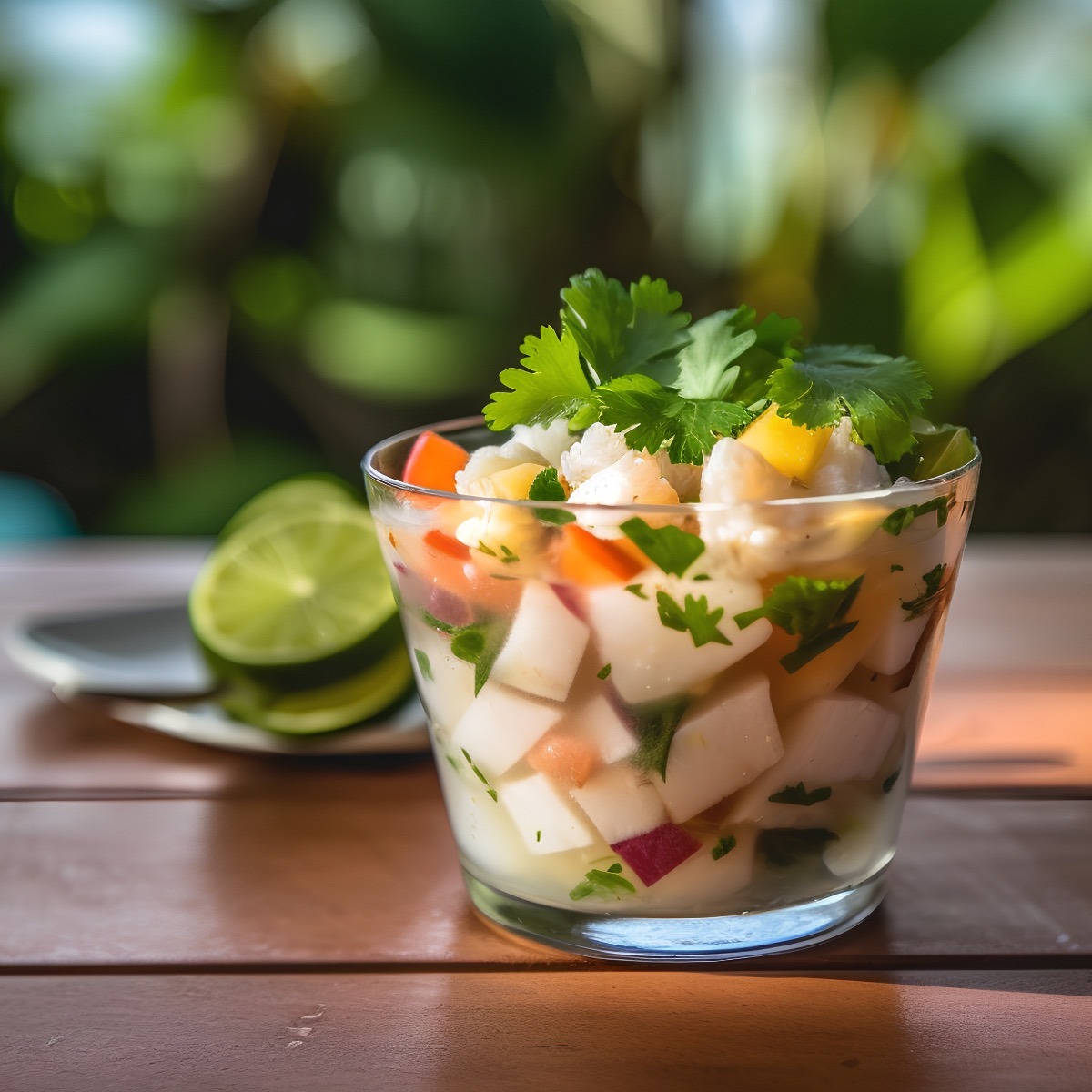
Ceviche is a seafood dish made from fresh raw fish like shrimp, scallops, bass, halibut or any other fresh ocean white fish that is cured in lemon or lime juice and combined with onion, green chili peppers, cilantro, olives, and whatever you feel would work with this dish. Is ceviche really cooked? Technically no. Cooking requires heat but by marinating fish in citrus juice, you are using a process called denaturation where you are altering the chemical and physical properties of the protein molecules similar to when you cook them with heat.
Charcuterie is a selection of cured and preserved meats, often served alongside various complementary accompaniments. It typically includes items like cured sausages, pâtés, cured hams, and artisanal cheeses, presented on a platter for an appetizing and visually appealing grazing experience.
Chicken Breast Half refers to one side of a whole chicken breast that has been divided into two portions. A whole chicken breast typically consists of two halves: the left side and the right side, separated by the breastbone.
When a recipe calls for a chicken breast half, it usually means using one of these individual portions. The boneless, skinless chicken breast halves are a common choice in cooking because they are lean and versatile. Many recipes that call for chicken breasts often specify whether to use them whole or to cut them into smaller pieces.
In culinary terms, it’s common to use the terms “chicken breast” and “chicken breast half” interchangeably, referring to the individual portions of the breast. When preparing chicken dishes, it’s important to follow the recipe instructions regarding the use of whole chicken breasts or specific portions, depending on the desired outcome.
Chiffonade is a culinary technique where herbs or leafy greens, like basil or spinach, are cut into thin, delicate ribbons. This is achieved by stacking the leaves, rolling them tightly, and slicing them finely, resulting in elegant and visually appealing garnishes or dish additions. Check out my post on knife cuts.
Cole slaw Coming from the Dutch term koolsla, which means “cool cabbage,” it’s a salad made with shredded cabbage mixed with mayonnaise and various other ingredients. Check out my dad’s cole slaw recipe to see what he puts into his.
Congee is a comforting rice porridge commonly consumed in Asian cuisines. It is made by simmering rice in a large amount of water or broth and is often served with various toppings and seasonings. Congee can be served by itself or combined with other ingredients like meat, chicken, vegetables, or seafood. It is prepared with lots of water, and the rice is cooked down to a thick porridge.
Cowboy caviar is a flavorful and colorful salsa-like dip originating from the Southwestern United States. It typically consists of black-eyed peas, corn, bell peppers, onions, tomatoes, and various herbs and spices. The combination of textures and zesty flavors makes it a delicious and versatile dish for parties and gatherings.
Demi-glace (DEHM-ee glahs) is a rich brown sauce made from reduced veal and beef stock used to make classic sauces. This stuff gives those sauces served at fancy restaurants a velvety texture and sheen; for more information about demi-glace.
Dredge (DREHJ) is to lightly coat a food, such as meat or vegetables, in a dry ingredient like flour, breadcrumbs, or cornmeal. This process helps to add a protective or crispy outer layer when the food is cooked, providing texture and flavor enhancement. Check out my recipe for Sole Meuniére.
Dutch babies, also known as German pancakes, are a type of oven-baked pancake that puffs up dramatically while cooking. Made from a batter of eggs, flour, milk, and sugar, they are light and airy and are typically served with powdered sugar, fruit, or syrup as a sweet breakfast or brunch treat.
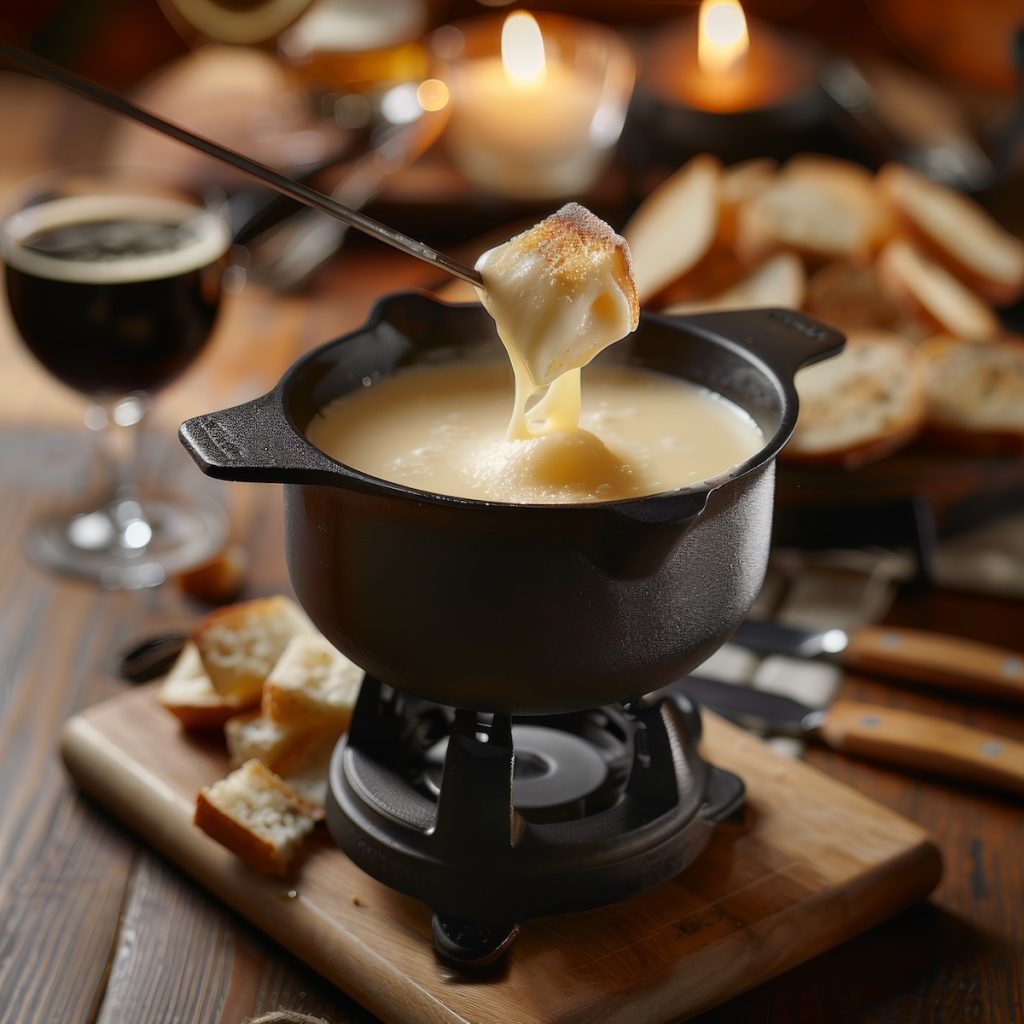
E – I
Filé Powder – (FEE-lay, fih-LAY) Filé powder is a spice made from dried and ground sassafras leaves. Traditionally used in Creole and Cajun cuisine, it adds a unique flavor and thickening agent to dishes like gumbo.
Fond is the brown caramelized bits of “stuff” left in the pan after you saute meat or fish. It’s the stuff you make great sauces from…sort of a base.
Fondue From the French word for “melt,” the term could refer to food cooked in a communal pot at the table or to finely chopped veggies that have been slowly cooked to a pulp and used as a garnish.
Gazpacho is a tomato-based veggie soup that is a great summer recipe when fresh vegetables are readily available in the kitchen. Here’s a great gazpacho recipe
Gochujang is a spicy and fermented Korean chili paste made from red chili peppers, glutinous rice, fermented soybeans, and salt. It has a deep and complex flavor with a balance of heat, sweetness, and umami and is commonly used as a condiment and ingredient in Korean cuisine.
Glace refers to a glossy and concentrated sauce or coating that is typically made by reducing and intensifying a liquid, such as stock or wine, to enhance flavors and textures.
Great Northern Beans Grown in the Midwest, this large white bean looks like a Lima bean and has a wonderful delicate flavor. Goes great in Winter Polish Peasant Sausage & Bean Stew.
Gremolada (greh moh Lah dah) An Italian garnish consisting of minced garlic, parsley, lemon rind, and sometimes shredded basil. It is most often used in garnishing osso buco.
Gratinéed means “with a browned crust of bread crumbs and grated cheese.” You may have heard of gratin potatoes or gratinéed tomatoes.
Gricia pasta sauce is a traditional Italian sauce originating from the Lazio region. It is made by sautéing guanciale (cured pork cheek) or pancetta with pecorino cheese, black pepper, and sometimes garlic. The resulting sauce is then tossed with pasta for a flavorful and indulgent dish.
Gumbo (GUHM-boh) is A thick stew-like dish associated with Creole cooking in Louisiana. It typically has ingredients including okra, tomatoes, onions, and some protein like crab, shrimp, sausage, or chicken. The name gumbo comes from a derivation of the African word for okra, one of the principal ingredients. Check out my recipe for Gumbo.
Haggis (HAG-ihs) A Scottish dish made from sheep organs (offal) like the heart, liver, and lungs. I’m not sure I will ever enjoy this traditional dish but if I’m in Scotland on Burns Night, the 25th of January to celebrate the birthday of poet Robert Burns or New Year’s Eve ( Hogmanay), I may give it a try. These innards are first boiled and then combined with beef suet and toasted oatmeal. Next, they are transferred to the sheep’s stomach which is sewn closed and then boiled again for hours. Served with mashed turnips and a little milk and allspice, called “neeps” or creamed potatoes flavored with nutmeg and called “tatties.”
Haricot vert (ah-ree-koh VeHR) is the French term for green string beans, but you find these really thin green beans in the supermarket. Comes from “haricot” which means bean and “vert” which means green. Some say they have better flavor, I’m not sure of that but they sure look good on the plate.
Hoisin sauce is a thick, dark pungent sauce used in Chinese cooking as a glaze, dipping sauce, or added to stir-fries. Also called Chinese plum sauce, the name hoisin comes from the Chinese word for seafood. Hoisin sauce varies depending on where in China you live. Ingredients may include soy, garlic, and red chilies.
Hominy An early gift from the American Indians, hominy is dried corn kernels that have had the hulls and germ removed either mechanically or chemically. We purchased canned hominy for our Posole, but you can also buy it dried. Do you remember in the movie My Cousin Vinny when they talk about grits? Well, they were talking about ground-dried hominy.
Ice I’m not talking about frozen water ice but instead the act of drizzling a baked good (cake, cupcakes, etc.) with a thin layer of frosting. You know it more commonly as icing.
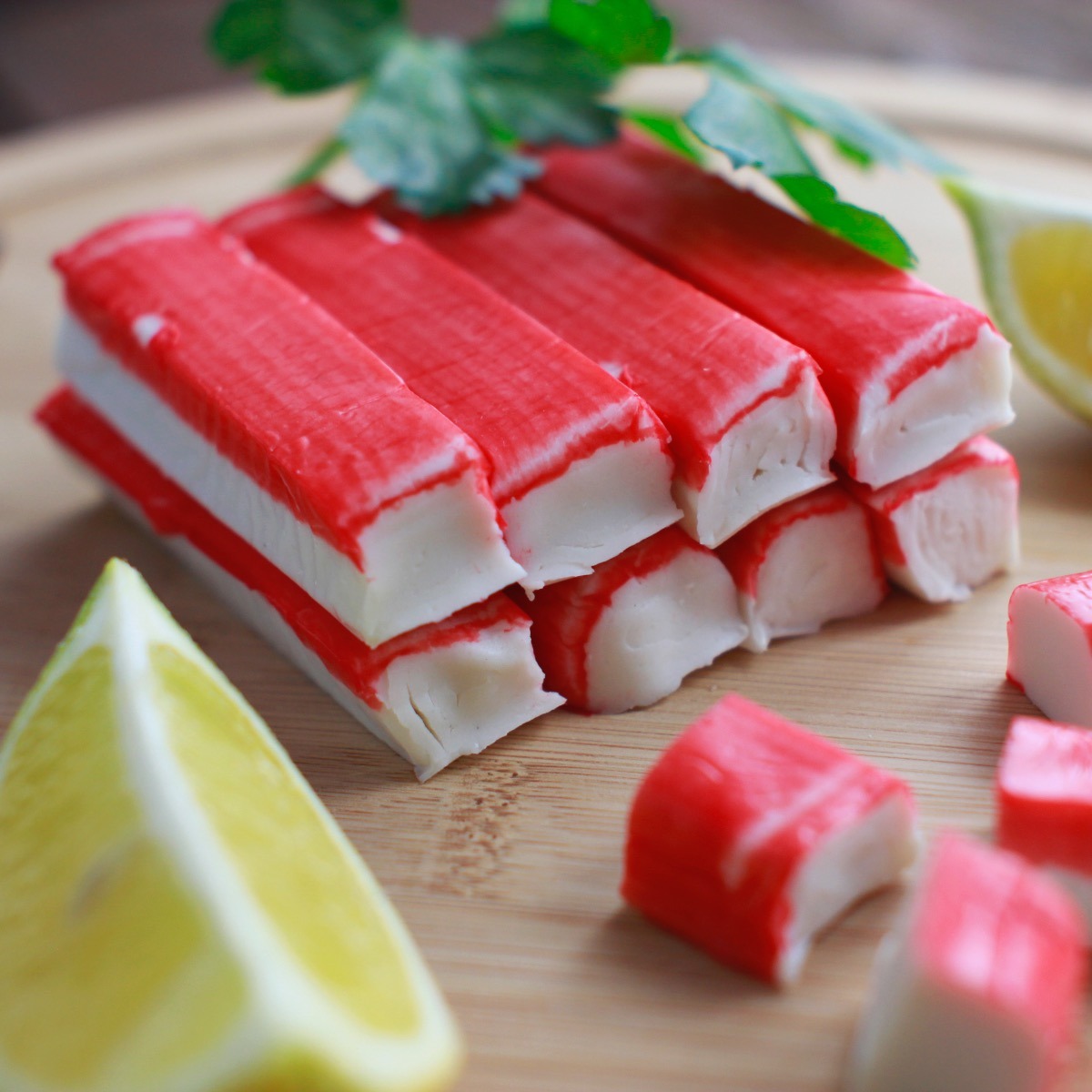
Imitation crab, or surimi, is a seafood product made from a mixture of fish paste, starch, and flavorings. It is designed to resemble the texture and appearance of real crab meat, offering a more affordable alternative for dishes like sushi rolls and seafood salads.
J – M
Kimchi (KIHM-chee) is a very spicy condiment that is extremely pungent and served at most Korean meals—made from fermented vegetables like turnips and cabbage that have been pickled. In Korea, they are then jarred, buried in the ground, and dug up when needed. If you like it HOT, you’ll like kimchi.
Maître d’ (MAY-truhDEE) is Short for maître d’hôtel, which translates literally as master of the hotel. The head waiter is in charge of assigning people to their tables in a restaurant. Part of their responsibilities may also include ensuring the staff waiters are doing their jobs, training them, handling complaints, and liaising between the front of the house and the kitchen.
Maillard Reaction is a chemical reaction that occurs when amino acids and reducing sugars react at high temperatures. It leads to browning, creating rich flavors, aromas, and complex compounds in foods. Responsible for the delicious crust on seared meats and the golden color of baked goods.
Margarita is a classic cocktail with a refreshing and tangy flavor profile. Typically made with tequila, lime juice, and orange liqueur, it is often served on the rocks or blended with ice. Margaritas are popular for their zesty and citrusy taste, perfect for sipping on warm summer days.
Marinade is a flavorful liquid mixture that enhances the taste and tenderizes meat, poultry, or seafood. Typically consisting of acidic ingredients like vinegar or citrus juice, oil, herbs, spices, and aromatics, it infuses the food with delicious flavors and helps to tenderize it before cooking.
Maritozzi are traditional Italian sweet buns hailing from Rome. These soft and enriched yeast rolls are typically filled with whipped cream or custard and sometimes adorned with raisins. Maritozzi are enjoyed as a delightful treat, especially during festive periods and special occasions.
Mesclun (MEHS-kluhn) A combination of fancy, young salad greens that were once hard to find but now popular and available pre-washed in the produce section of your supermarket in the Bag O Salad section. The mix usually contains a combination of arugula, dandelion, frisee, mizuma, oak leaf, radicchio, and sorrel.
Meuniére (muhn-YAIR) is a fancy French name for “miller’s wife” and refers to the cooking technique used. In this case, fish is seasoned with salt and pepper, then dredged with flour and sautéed in butter. Check out my recipe for Sole Meuniére
mise en place (MEEZ ahn plahs) This technique is IMPORTANT and the hardest to get novice cooks to stick with. It’s a French term for having all your ingredients prepped and ready to go before starting you start cooking. That means everything is cleaned, peeled, chopped, diced, measured out, and whatever’s necessary to get the ingredients ready before preparing your dish. Many of us, including myself, start cooking and prepping simultaneously—a big NO-NO. Try to get into the habit of mis en place. To read more about mise en place
Miso – a fermented soybean paste made from soybeans, salt, and koji (a filamentous fungus (a mold) used in Japan to ferment soybeans for making soy sauce and fermented bean paste) but can be made from barley, rice, or other grains. You often find it as red or white miso; the darker the color, the stronger the taste. It is famous in Japan for miso soup but can be used to make sauces and Asian-style salad dressings.
Mochiko is a type of glutinous rice flour commonly used in Japanese and other Asian cuisines. It is made from short-grain glutinous rice and adds a chewy and sticky texture to dishes like mochi, dango, and other sweet or savory treats.
Mongolian Hot Pot is a communal dining experience originating from Mongolia and China. It involves a simmering pot of flavorful broth placed at the center of the table, where diners cook various raw ingredients, such as meats, vegetables, and noodles, creating a personalized and interactive meal.
Toggle Content
Mortadella is a classic Italian deli meat from Bologna. It is a large, cylindrical, finely ground pork sausage seasoned with spices like black pepper and myrtle berries. Known for its distinctive pink color and recognizable flavor, mortadella is commonly sliced and enjoyed in sandwiches or antipasto platters.
Muddle means gently crushing or pressing ingredients, such as fruits, herbs, or sugar, in the bottom of a glass or cocktail shaker. This technique releases flavors and aromas, infusing them into the drink and adding a fresh and vibrant element.
N – Q
Nap refers to the process of coating a dish with a thin and smooth layer of sauce, typically done to enhance presentation and flavor. The sauce should lightly cling to the food, creating an appealing visual and textural effect.
Orzo (OHR-zoh) is a type of small, rice-shaped pasta commonly used in Mediterranean and Middle Eastern cuisine. With a versatile and delicate texture, it is often cooked and served as a base for salads, soups, or pilaf dishes, adding a satisfying bite to meals.
Ossobuco (AW-soh BOO-koh) in Italian means bone with a hole, from where this dish derives its name. The hole is filled with marrow; some consider it a delicacy while others shy away. This Italian dish is made with gelatinous veal shanks that are braised with fresh vegetables and rich stock. This dish comes from Milan in Italy’s northern region of Lombardy. The area is known for dairy farming with veal being a natural by-product. Ossobuco is a simple and delicious meal that is often served with Gremolata.
Pancetta is an Italian bacon made from pork belly that is cured with salt and spices, often including black pepper and garlic. Unlike traditional bacon, pancetta is not smoked, resulting in a rich, slightly salty flavor that enhances many recipes, from pasta to salads.
Panko is a type of Japanese breadcrumb made from crustless bread that is light and airy. It has a coarse texture and is known for its superior crispness when used as a coating for fried or baked dishes, adding a delightful crunch to various recipes. See my post on panko bread crumbs
Pappardelle, from the Italian city of Bologna, this long ribbon pasta measures 6 – 10 inches long and anywhere from 1/2″ to 1″ wide. It is great with hardy sauces because of its larger surface. It’s usually homemade but is starting to show up more and more in gourmet stores and supermarkets. If your local gourmet store doesn’t carry it, ask them. They are usually accommodating.
Pesto (PEH stoh) An uncooked sauce that can also be used as a condiment from Genoa, Italy, and usually contains fresh basil, garlic, pine nuts, Parmesan cheese, and olive oil although I’ve made it with arugula, sun-dried tomatoes, and cilantro. I make mine with a food processor, but it is often made by hand with a mortar and pestle.
Pici pasta is a traditional Italian pasta variety originating from Tuscany. Hand-rolled from a simple dough of flour and water, it lacks eggs, resulting in a dense and chewy texture. Its irregular, thick strands make it a versatile canvas for a range of flavorful sauces.
Pinakbet is a traditional Filipino vegetable dish known for its vibrant flavors and colorful presentation. It features a combination of mixed vegetables, such as bitter melon, eggplant, okra, and squash, cooked in shrimp paste and often garnished with pork or shrimp, resulting in a savory and satisfying meal.
Pincho or Pintxo (Basque): means “thorn” or “spike” in Spanish and is a small snack, similar to a tapas, typically enjoyed in bars and restaurants in northern Spain. Rather than a small plate of food like a tapas, it is typically one serving held together on a toothpick. Read more about my experiences eating pincho in San Sebastian.
Pine nuts, also called pignoli or Italian nuts, pine nuts come from, you guessed it, pine trees. The nut is extracted from the cone usually with heat and is highly labor-intensive and thus expensive. they have a high-fat content and should be stored in airtight containers in your refrigerator. They have a wonderful flavor especially when toasted.
Pistou (pees-TOO) is a Provençal sauce made by blending fresh basil, garlic, olive oil, and sometimes other ingredients like grated cheese or nuts. It resembles Italian pesto but is typically served without pine nuts, making it a vibrant and fragrant addition to soups, stews, or as a condiment.
Pomme de terre Pomme de terre is the French term for “potato.” It literally translates to “apple of the earth.” This versatile tuber is a staple in many cuisines, prized for its ability to be roasted, mashed, fried, or used in countless dishes, providing a comforting and satisfying element.
Pot pies are savory baked dishes with a pastry crust filled with meats, vegetables, and a rich sauce. Commonly associated with comfort food, pot pies can feature various fillings such as chicken, beef, or vegetables, providing a hearty and satisfying meal.
Posole (poh-SOH-leh) is a traditional Mexican dish from the Pacific coast region of Jalisco. A thick soup that’s usually made with pork, hominy, garlic, onion, chili peppers, cilantro, and broth.
Pope’s Nose refers to the fatty, triangular piece at the tail end of a cooked chicken or turkey. Also known as the parson’s nose, it is considered a flavorful and succulent delicacy enjoyed by those who appreciate its rich texture and taste.
Prosciutto is a dry-cured Italian ham made from the hind leg of a pig. It is renowned for its delicate and savory flavor, with a melt-in-your-mouth texture. Sliced thin, it is often enjoyed on its own, wrapped around fruits, or used as a key ingredient in various dishes.
puree (n) Any food that is mashed to a thick, smooth consistency. puree (v) the action of mashing a food until it has a thick, smooth consistency usually done by a blender or food processor.
R – U
Ragù is a savory Italian meat sauce that is slow-cooked to develop rich flavors. Typically made with a combination of meats, such as beef, pork, and veal, along with aromatic vegetables, herbs, and tomatoes, it creates a luscious and hearty sauce perfect for pairing with pasta, including pici.
Refried beans are a traditional Mexican dish made from cooked and mashed beans, usually pinto or black beans. Despite the name, they are not actually fried twice but cooked with onions, spices, and sometimes lard for a creamy, flavorful consistency. Refried beans are a versatile and delicious accompaniment to various Mexican and Tex-Mex dishes.
Rennet is a natural enzyme used in cheesemaking to coagulate milk and separate it into curds and whey. Traditionally derived from the stomach lining of young mammals, it aids in the formation and texture of various types of cheese, playing a crucial role in the cheesemaking process.
Resting or removing meat or poultry from heat before reaching ideal internal temperatures to allow the redistribution of juices in the meat. This helps keep the meat retains its juices, evens out temperature and doneness, and makes it easier to carve.
Rigatoni is a popular Italian pasta with large, ridged tubes that are cut straight at the ends. Its robust shape and texture make it ideal for capturing and holding onto thick and hearty sauces, making every bite a delicious and satisfying experience.
Roux A mixture of flour and fat cooked over low heat and thickens soups and sauces. There are three types of roux…white, blond, and brown. White and blond roux are both made with butter and used in cream sauces while brown roux can be made with either butter or the drippings from what you are cooking and is used for darker soups and sauces.
Rhubarb pandowdy is a classic dessert with a sweet-tart filling of rhubarb baked under a layer of biscuit or pie crust. During baking, the crust is intentionally “dowdied” or broken into pieces and pushed into the fruit, creating a rustic and deliciously messy dessert.
Sachet A sachet is a small bag made of cloth or cheesecloth filled with various herbs and spices and used to flavor the soup, stews, stocks, and sauces. The combination of herbs and spices can vary depending on your cooking but typically include bay leaves, peppercorns, parsley, and thyme.
Fresh herbs and spices are better, but dried ones will do nicely if you can’t access fresh ones. You can use kitchen string (I have a roll of kite string in our kitchen) to tie the bundle together or even tie the four corners to themselves. I have even seen these nifty disposable cloth bags you can buy at kitchen supply stores.
Saffron is an extremely expensive yellow-orange spice made from the stigmas of purple crocus. Think about this; each crocus produces only three hand-picked and dried stigmas. It takes 14,000 of these tiny stigmas to produce an ounce of saffron. When buying choose the whole threads over the powder form and store them in an air-tight container in a cool dark place. Saffron is used for flavoring but was once used for medicinal purposes and dying clothes.
Saimin noodles are a type of thin, wheat-based noodle commonly found in Hawaiian cuisine. Influenced by Japanese ramen, Chinese mein, and Filipino pancit, saimin noodles are typically served in a savory broth with various toppings like char siu, green onions, and kamaboko, creating a comforting and flavorful dish.
Salumeria is an Italian specialty shop or delicatessen that specializes in selling cured meats, such as salami, prosciutto, and mortadella, as well as various cheeses, olives, and other gourmet products. It is a haven for exploring and acquiring high-quality charcuterie and artisanal offerings.
Self-rising flour is one of the first “baking mixes.” Rather than measuring out all-purpose flour, baking powder, and salt separately, a cook can measure the self-rising flour–everything else is already in there.
Score refers to the process of making shallow cuts or incisions on the surface of food, such as meat or fish. This technique serves multiple purposes, including tenderizing the protein, promoting even cooking, enhancing presentation, and allowing marinades or seasonings to penetrate effectively.
Scoville scale Think of this scale as a way to measure the hotness of peppers in heat units called Scovilles. It basically measures the capsaicin concentration, which gives peppers their hotness. It is named after its founder Wilbur Scoville who devised the Scoville Organoleptic test back in 1912.
Shaoxing wine is a Chinese rice wine made from fermented rice and originated from a region in China called Shaoxing. It can be drunk but is most often used in cooking. It is a variety of huangjiu wines made from water, cereal grains, and a starter. It is not fermented and typically contains less than 20% alcohol.
Shoofly pie is a traditional Pennsylvania Dutch dessert originating from the United States. It consists of a molasses-based filling combined with flour, brown sugar, and spices, baked in a pie crust. The resulting pie has a gooey bottom layer and a crumbly, sweet top layer, making it a deliciously unique treat.
Simmer To cook food in liquid gently over low heat. You should see tiny bubbles just breaking the surface of the liquid.
Skirt steak is a flavorful and relatively inexpensive cut of beef derived from the diaphragm muscle. It is known for its long, thin shape and pronounced grain. Skirt steak is prized for its rich beefy taste and is commonly used in fajitas, stir-fries, and grilled dishes.
Smoking point is when a fat such as butter or oil smokes and lets off an acrid odor. Not good since this odor can get into your cooking and give it a bad flavor. Butter smokes at 350° F, vegetable oil at 445° F, lard at 365°-400°F and olive oil at about 375° F.
Speck is a pork product very similar to prosciutto or bacon. Hailing from northern Italy, speck is first cured in salt with spices like juniper and laurel and then slow-smoked for several months. If you taste it raw, it will taste fatty but it is an excellent ingredient to cook with to give a dish another layer of flavor. Some people call speck Italian bacon.
Stir-Fry is a high-heat cooking method often associated with Chinese cooking where ingredients are cooked in a small amount of hot oil while constantly stirring. Stir-frys are often prepared in a cooking vessel called a wok but you can stir fry in a frying pan. To learn more about this great Stir-Fry technique…
Stock, also called broth or bouillon, a flavorful liquid made by gently cooking meat, chicken, or fish (with bones) in water and used for making sauces, soups, and glaces and can be used for braising or poaching. I have read that for this liquid to be called stock, it must be made with bones therefore there is no such thing as vegetable stock. Not so sure this is true but sounds interesting. I have also read that the term comes from professional chefs keeping this important liquid ingredient “in stock” until they need it to cook with.
Strozzapreti pasta is an Italian variety known for its twisted, elongated shape and rough texture. The name translates to “priest choker,” stemming from a tale that the pasta’s deliciousness could cause gluttonous priests to choke. Its ridges and spirals provide excellent sauce adherence, resulting in a satisfying and flavorful eating experience.
Sweat refers to the gentle cooking technique of heating ingredients, such as vegetables or aromatics, in a small amount of fat over low heat. This method lets them release moisture, soften, and develop flavors without browning or caramelization.
Tapenade (ta pen AHD) is a thick paste made from capers, anchovies, olives, olive oil, lemon juice, and seasonings. This delicious condiment originated in France’s Provence region.
Tinto de Verano is a refreshing Spanish beverage commonly enjoyed during the summer. It is made by mixing red wine with lemon soda or carbonated water, resulting in a light, fruity drink with a lower alcohol content. Tinto de Verano is perfect for hot days and outdoor gatherings.
Toad-in-the-hole A British dish consisting of a Yorkshire Pudding batter and cooked link sausages. When baked, the batter puffs up around the sausages giving the appearance of “toads in the hole.”
Tomato concasse is a culinary technique where tomatoes are blanched, peeled, seeded, and diced into small pieces. This process helps remove the skin and seeds, resulting in a smoother texture. Concasse is commonly used in sauces, soups, and salsas to enhance the flavor and appearance of dishes.
Tomato Passata is an uncooked tomato puree with seeds and skins strained out. Passata originated in Italy but is found and used throughout many countries. It differs from tomato sauce or tomato paste because it is not cooked. It is 100% uncooked tomatoes with no added garlic, onion, or carrots. Passata are sold in some gourmet markets in tall, thin bottles or cardboard cartons.
Tzatziki (dzah-DZEE-kee) is a popular Greek sauce made with drained plain yogurt, cucumbers, garlic, oil, vinegar, and well-drained plain yogurt. It can be used as a spread on flatbreads, makes a perfect lamb sauce, or works well with Greek-style turkey burgers.
Umami One of the five basic tastes often referred to as savoriness with a “long-lasting, mouthwatering and coating sensation over the tongue.”
V – Z
Vinegar There are many kinds of vinegar, and you can make them from various ingredients, including grapes, apples, grains, and more. Vinegar is a byproduct of fermentation that creates a sour-tasting liquid.
Wok Hay is a Chinese (Cantonese) phrase describing a perfect stir-fry’s special flavor and aroma. If properly done, a stir-fry achieves “the breath (hay) of a wok” and is considered authentic.
Worcestershire sauce Developed in India by the British, this dark, spicy sauce got its name from the city where it was first bottled…Worcester, England. The recipe includes soy sauce, onions, molasses, lime, anchovies, vinegar, garlic, tamarind, and other spices used to season meats, gravies, and soups. Read all about it at Worcestershire Sauce.
Za’atar is a Middle Eastern spice blend with a distinct and aromatic flavor. It typically consists of dried thyme, sesame seeds, sumac, and sometimes other herbs and spices. Za’atar is used as a seasoning for various dishes, such as meats, vegetables, breads, and dips, adding a unique and tangy herbal note.




